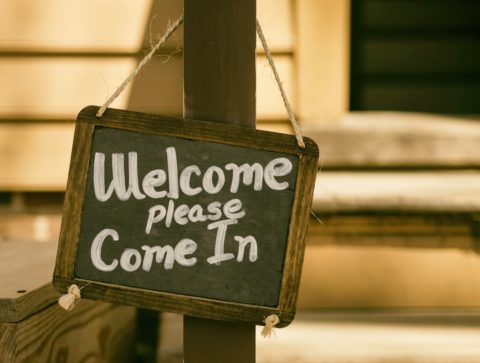
I enjoy helping my clients get visas not only on a personal level, but also for the systemic benefit they bring to the US economy.
As I’ve mentioned in the past, 40 percent of Fortune 500 companies were started by immigrants or their children, including Kraft, Heinz, Mattel, Apple, and Google.
In 2020, foreign nationals contributed $39 billion to the US economy and supported another 410,000 jobs across the country.
They help the US remain competitive.
I’m feeling optimistic as the Biden Administration recently announced several regulation changes and clarifications that signal they value foreign nationals’ contribution too.
US Needs More STEM Students and Professionals
The fields of science, technology, engineering, and math, collectively known as STEM, provide the brain power that solves complex problems and fuels innovation, key drivers of any economy.
The US relies upon foreign national students and professionals to meet the demand for talent in these fields.
The National Science Board reports that 45 percent of doctoral workers in science and engineering occupations are foreign born. In some sectors, the percentage is much higher. For engineers, the percentage rises to 57.1 percent. For computer and mathematical scientists, it’s 60.8 percent.
US universities struggle to graduate enough STEM PhDs to keep up with demand.
According to a recent report from Georgetown University’s Center for Security and Emerging Technology, China surpassed the US in 2007 in the number of STEM PhDs awarded.
Since then, the gap has widened. Estimates show that by 2025, China may produce double the number of annual STEM PhD graduates (77,179) compared to the US (39,959).
Once graduated, competition among countries for STEM degree holders – bachelor’s, master’s, and doctorate – can be fierce. Most who were educated in the US would like to stay and work here.
The Biden administration’s recent actions make it easier for recent STEM graduates to work in the US and broaden opportunities for STEM professionals.
22 Additional Fields of Study Eligible for STEM OPT
A key challenge for foreign-born STEM graduates is to transition from student to employee and from F-1 status to H-1B visa.
I first encountered this issue as an International Student Advisor at Purdue University. It is part of what inspired me to go into immigration law.
To help students make these transitions, the Department of Homeland Security (DHS) created the STEM Optional Practical Training (OPT) program. This program gives eligible F-1 students with STEM degrees a total of 36 months to work after graduation before they must transition to an H-1B visa.
The 36-month long opportunity relieves some pressure on those students when they enter the H-1B visa lottery. If they do not get selected on their first try, in their first year of employment, they can work two more years and have two more chances at the lottery.
DHS has recently added 22 areas of study to the STEM program so more students qualify.
The new areas cover a wide breadth of fields, including bioenergy, human-centered technology design, cloud computing, climate science, geography and environmental studies, general data science, financial analytics, data visualization, research methodology, and quantitative methods.
National Interest Waiver Opportunities Increase
While there are more opportunities for foreign nationals on the H-1B visa path, the number of H-1B visas awarded annually is still constrained by law to 65,000 for bachelor’s degree and above, plus 20,000 for those with at least a master’s degree.
That’s not a big number given the size of the US and the number of organizations seeking STEM professionals.
To expand the number of opportunities for foreign nationals of exceptional ability, US Citizenship and Immigration Services (USCIS) clarified and updated policies which may lead to more STEM professionals gaining O-1 visas and green cards.
The O-1A visa applies to noncitizens of extraordinary ability in the fields of science, arts, education, business, and athletics.
USCIS clarified how they determine eligibility for O-1A petitioners and provided specific examples of evidence that would meet their criteria, including examples for STEM workers. This update paves the way for more STEM workers to seek O-1A visas and increases their chances of success.
Another USCIS policy update allows noncitizens with advanced degrees or extraordinary abilities to self-petition for employment-based green cards, without a specific employment situation or Department of Labor certification. To do this, applicants would need to show their expertise to be in the national interest.
Good News for a Change
It feels wonderful to be able to deliver good news to you.
With these announcements, the Biden administration has taken several steps in the right direction. And while they have a distance to go, I’m optimistic about the future for foreign nationals in the US.
If you have any questions about these new opportunities, please email me or call me at 630-262-1435.
H-1B Cap Season Is Upon Us
USCIS recently announced that the initial registration period for the 2023 H-1B Cap will run from noon Eastern time on March 1 to noon eastern time March 18, 2022.
If you are planning to apply for an H-1B visa and would like my help, please contact me today, and not later than February 14 so I can help you prepare the best possible petition.
